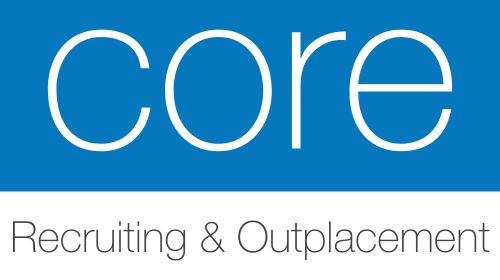
Qualitatives Falschgeld Bestellen
FollowOverview
-
Founded Date November 20, 1993
-
Sectors IT and Digital
Company Description
Are You Making The Most Of Your Buy Fakes?

The Reality of Buying Fakes: Understanding the Risks and Implications
In today’s consumer-driven society, the attraction of counterfeit items is more potent than ever. From designer handbags to electronics, numerous people discover themselves lured by the apparently appealing rates of these knockoff items. Nevertheless, the implications of purchasing fakes extend beyond simple economics; they incorporate legal, ethical, and Falschgeld drucken lassen social dimensions that consumers typically overlook. This short article aims to supply a thorough understanding of the phenomenon of buying counterfeit products, exploring the risks associated with it while dealing with typical questions surrounding the topic.
What Are Counterfeit Products?
Counterfeit products are replica items that are designed to look like and trick consumers into thinking they are buying authentic items. They are normally produced without the authorization of the initial brand name owner and often cost a fraction of the rate of real items. Counterfeiting can happen throughout numerous industries, consisting of fashion, electronic devices, cosmetics, and pharmaceuticals.
Kinds Of Counterfeit Products
-
Luxury Goods: High-end style products, accessories, and appeal products are typical targets for counterfeiters. Fakes might include imitation designer bags, shoes, and clothes.
-
Electronic devices: Counterfeit electronics, including mobile phones and laptop computers, might do not have the quality and dependability of genuine posts, putting users at risk.
-
Pharmaceuticals: Fake medications position a severe risk to public health, as they might contain harmful active ingredients or absence efficacy.
-
Software application: Pirated software application can jeopardize user security and breaks intellectual residential or commercial property rights.
The Allure of Buying Fakes
Cost Savings
Among the main reasons consumers go with counterfeit products is the cost distinction. For those on a budget plan, reproductions might look like an attractive alternative to the high price of initial products.
Ease of access
Counterfeit goods are often more accessible than authentic items, particularly for classes of individuals who can not manage high-end brands. The rise of online marketplaces has made counterfeit items even easier to find and buy.
Social Acceptance
In some circles, owning a counterfeit designer product can work as a status sign, albeit a controversial one. This practice can foster a culture where brand representation takes precedence over authenticity.
The Risks of Purchasing Counterfeit Products
While the immediate temptation to buy fakes may appear appealing, the consequences can be substantial:
1. Legal Consequences
The production and sale of counterfeit items are prohibited in a lot of countries. Acquiring counterfeit products can expose consumers to prospective fines, legal action, or confiscation of prohibited products.
2. Quality and Safety Concerns
Counterfeit items typically undergo lax production requirements. They may be made from inferior products, posturing threats such as poor efficiency or safety risks. For example, counterfeit electronic devices may overheat or malfunction, causing prospective injuries.
3. Ethical Implications
Buying fake items supports unethical company practices. Counterfeit manufacturing adds to the exploitation of employees, frequently involving questionable labor practices, kid labor, and substandard working conditions.
4. Damage to Brand Integrity
The expansion of fake items weakens the difficult work and development of genuine brands. Brand name owners deal with disintegration of credibility and profits due to counterfeiters profiting at their expense.
Often Asked Questions (FAQs)
Q: Are there any legal effects for purchasing counterfeit goods?
While laws vary by country, purchasing counterfeit goods can in some cases carry ramifications such as fines or confiscation of products. It’s vital to understand the legal framework in your location.
Q: How can I recognize counterfeit items?
Search for:
- Misspellings: Check product labels for disparities.
- Quality Differences: Authentic goods often have higher quality ending up and materials.
- Cost Too Good to be True: If the rate is substantially lower than the market value, it might be a warning.
Q: What should I do if I accidentally buy a counterfeit product?
If a customer realizes they have purchased a counterfeit item, they need to:
- Cease Use: Stop utilizing the product to prevent safety dangers.
- Report: Notify the platform or seller, and report the counterfeit to the appropriate authorities as required.
Q: Can I report counterfeit sellers?
Yes, consumers can frequently report counterfeit goods to numerous online marketplaces, local police, and relevant authorities, such as the International AntiCounterfeiting Coalition.
Alternatives to Buying Fakes
If people discover themselves drawn to counterfeit products, considering alternatives may be better:
1. Thrift Shopping: Purchasing second-hand authentic goods is a sustainable choice. Thrift stores, consignment stores, and online pre-owned platforms can use authentic products at reduced rates.
2. Sales and Discounts: Keep an eye out for sales, promotions, and clearance events used by legitimate brand names.
3. Inexpensive Alternatives: Many companies offer budget-friendly choices that capture comparable looks without compromising brand stability.
4. DIY Projects: For those with imaginative abilities, making personalized items can be a satisfying and distinct alternative to acquiring fakes.
The choice to acquire counterfeit items may appear beneficial on the surface area, but the multifaceted threats included– from legal repercussions to ethical concerns– must be thoroughly thought about. In a world significantly concentrated on sustainability and credibility, customers have the power to make choices that reflect their values by opting for genuine products or sustainable alternatives. By promoting awareness about the implications of such purchases, society can work towards a more ethical consumer culture that focuses on quality, security, and integrity.
